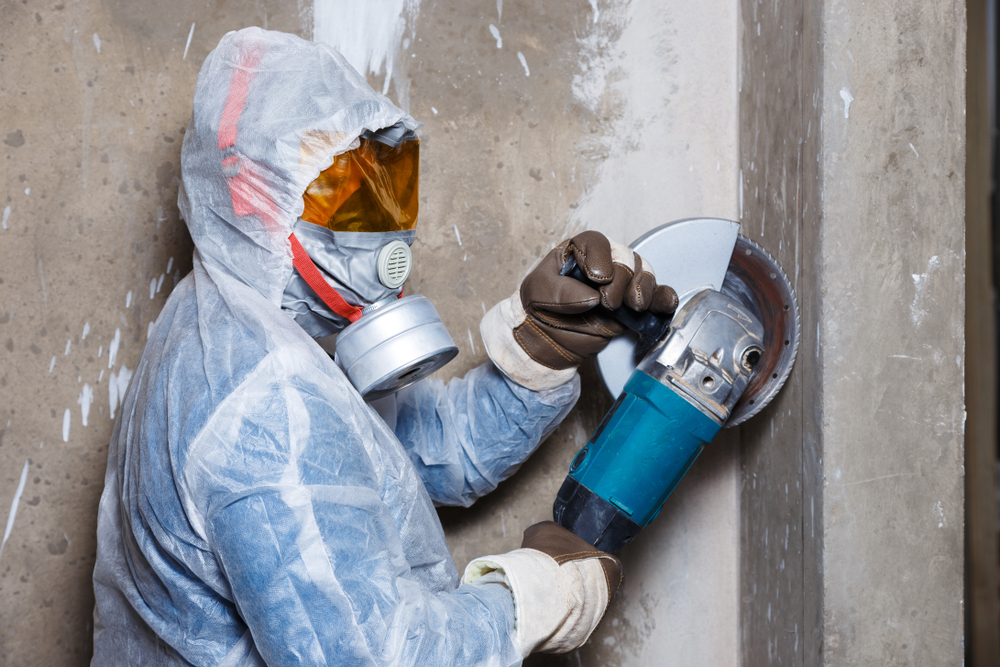Sawing concrete is hazardous no matter what method is used. Training, supervision and safety precautions are therefore crucial when cutting concrete indoors.
Some of the hazards that are associated with concrete cutting and need to be taken into account include:
- Inhaling silica dust
- Exhaust fumes that are toxic
- Kickback, pull-back or pull-in from working with equipment that exerts great force
- Working in confined spaces
- Structural collapses
- Noise pollution
- Equipment malfunctions, damage and fractures
- Hazards associated with working in a construction environment
Standard safety precautions outlined by the OSHA Code of Practice to lower the risk of any of these hazards occurring include:
1. Safety Gear
All persons working in concrete cutting and drilling are required to wear and use personal protective clothing and equipment. The standard safety gear should include the following:
- Safety helmet or hardhat
- Protective footwear
- Safety goggles and/or a face shield
- Respiratory protection to protect against dust and/or exhaust fumes
- Safety gloves to protect the hands and improve grip
- Earplugs or earmuffs to protect hearing
In addition, workers must be required to tie back long hair and beards as well as to avoid wearing loose-fitting clothing and remove all jewellery.
Safety gear should meet with the required OSHA safety standards.
2. Equipment Handling And Storage
Equipment should be handled according to the manufacturer’s instructions and not be used in any way that it is not intended.
Manufacturers are required to provide detailed instruction manuals for the handling and use of concrete cutting equipment.
Any person using the equipment should receive adequate training and practise with the equipment – especially before handling the equipment in an indoor environment.
Equipment should be stored according to manufacturer’s instructions and locked away out of harms way when not in use.
Saw blades should be removed and the equipment detached from a power supply before storage.
Equipment should be checked for damage or any problems that could affect the operation or be hazardous when it is removed from storage.
3. Identifying Hazards And Assessing And Controlling Risks
Identifying any hazards that may exist before concrete cutting begins can help reduce or eliminate the risks.
There are 27 hazards that have been identified and included in the Code of Practice for masonry and concrete cutting.
However, other risks, especially those that are associated with indoor masonry cutting, should also be taken into account.
Once a hazard has been identified, it is necessary to determine the risk of injury or safety that it poses. Measures should then be taken to control the risk.
Eliminating the risk or hazards entirely is preferable to reducing the risk that a specific hazard poses.
4. Implementing Safety Procedures
Safety procedures should be developed and enforced that put in place control measures to eliminate risks and hazards.
These procedures should be reviewed and updated regularly at regular health and safety meetings.
The outcome of these meetings should be communicated to every person involved in a project involving masonry or concrete cutting.
Detailed records should be kept of maintenance and repairs to equipment. Any hazards that have been identified as well as the measures that have been taken to control the risks should be recorded.
A record of injuries that were sustained and how they were caused also needs to be recorded.
It is also critical to select a person who is ultimately responsible for developing and implementing safety procedures as well as ensuring that adequate training is provided for the use of equipment.
It is important to note that this is just an outline of the hazards, risks and safety precautions that should be taken when cutting concrete indoors.
As we can see, there are many things to consider when choosing a reputable and experienced concrete cutting service.
If you are looking for a specialist concrete cutting company who uses only the best practices to get the job done right, then please call us at Megasaw on 1300 920 419 or contact us through our website.

